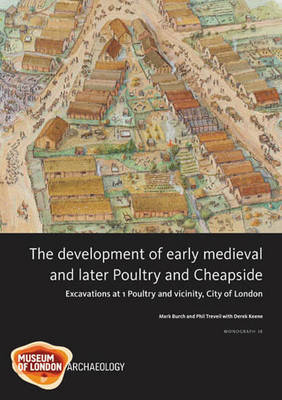MOLAS MONOGRAPH
1 primary work
Book 38
The Development of Early Medieval and Later Poultry and Cheapside
by Mark Burch, Phil Treveil, and Derek Keene
Published 15 November 2010
One of the largest excavations in the City of London at 1 Poultry recovered a remarkable archaeological sequence from the 1st to the 20th century AD. This volume presents the evidence for Late Saxon, medieval and post-medieval development of this part of the city. Poultry occupied a prominent position at the eastern end of Cheapside, the city's principal medieval market street; integrating documentary evidence with the archaeological record has provided an outstandingly detailed account of this area.
Re-occupation of the site in the later 10th century began with the construction of scattered sunken-floored buildings; a more regular pattern of settlement, characterised by narrow-fronted timber buildings along the roadsides, developed by the early 11th century. Occupation became progressively denser up to the 13th century when large stone-built houses began to be built in previously open areas behind the street frontages. Metalworking evidence from the excavated buildings provides evidence of early economic activity, corresponding with later documentary evidence for smiths, ironmongers and other metalworkers in the area.
Re-occupation of the site in the later 10th century began with the construction of scattered sunken-floored buildings; a more regular pattern of settlement, characterised by narrow-fronted timber buildings along the roadsides, developed by the early 11th century. Occupation became progressively denser up to the 13th century when large stone-built houses began to be built in previously open areas behind the street frontages. Metalworking evidence from the excavated buildings provides evidence of early economic activity, corresponding with later documentary evidence for smiths, ironmongers and other metalworkers in the area.
